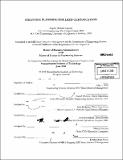| dc.contributor.advisor | Daniel Whitney and Sara Beckman. | en_US |
| dc.contributor.author | Capuzzi, Angelo Michael | en_US |
| dc.contributor.other | Leaders for Global Operations Program. | en_US |
| dc.date.accessioned | 2010-10-12T17:46:54Z | |
| dc.date.available | 2010-10-12T17:46:54Z | |
| dc.date.copyright | 2010 | en_US |
| dc.date.issued | 2010 | en_US |
| dc.identifier.uri | http://hdl.handle.net/1721.1/59160 | |
| dc.description | Thesis (M.B.A.)--Massachusetts Institute of Technology, Sloan School of Management; and, (S.M.)--Massachusetts Institute of Technology, Engineering Systems Division; in conjunction with the Leaders for Global Operations Program at MIT, 2010. | en_US |
| dc.description | Cataloged from PDF version of thesis. | en_US |
| dc.description | Includes bibliographical references (p. 49-51). | en_US |
| dc.description.abstract | Intel Corporation has recently implemented a "green building" policy, which states that Intel will design all new facilities to achieve a minimum LEED-Silver certification. LEED (Leadership in Energy and Environmental Design) is a voluntary, consensus-driven rating system used to distinguish high performance, sustainable buildings. Buildings earn "points" in different environmental categories, and the total number of points achieved determines the certification level (Certified, Silver, Gold, or Platinum). While LEED certification has been successfully applied to many residential and commercial buildings, and occasionally to manufacturing facilities, it has not been applied to many wafer manufacturing facilities (fabs), which house the manufacturing and production of Intel's microprocessors. Wafer fabs have much higher energy and water consumption levels than typical buildings due to their strictly controlled temperature, humidity, and particulate requirements, making LEED certification more challenging for a fab than for a typical building. The objective of this study was to develop a planning strategy case study for Intel to achieve LEEDSilver certification for the construction of a hypothetical new wafer fab. The case study identified the main barriers to achieve LEED certification, including cost, risk, process, acceptance and alignment barriers, and outlined means to overcome them. The LEED criteria were then analyzed to determine the costs, benefits, and risks of pursuing each individual credit. The resulting "portfolio planning" model was then used to optimize a portfolio of credits for Intel to pursue. The final results indicated that for the optimized scenario, LEED-Silver certification could be achieved for a positive NPV of over $130,000. Significant cost savings were achieved through the avoidance of the credits related to energy efficiency and on-site renewable energy generation, credits that pose a significant risk to Intel due to the high energy consumption of a fab. Finally, process improvement recommendations were made for the planning, design, and construction of a LEED certified fab. | en_US |
| dc.description.statementofresponsibility | Angelo Michael Capuzzi. | en_US |
| dc.format.extent | 51 p. | en_US |
| dc.language.iso | eng | en_US |
| dc.publisher | Massachusetts Institute of Technology | en_US |
| dc.rights | M.I.T. theses are protected by
copyright. They may be viewed from this source for any purpose, but
reproduction or distribution in any format is prohibited without written
permission. See provided URL for inquiries about permission. | en_US |
| dc.rights.uri | http://dspace.mit.edu/handle/1721.1/7582 | en_US |
| dc.subject | Sloan School of Management. | en_US |
| dc.subject | Engineering Systems Division. | en_US |
| dc.subject | Leaders for Global Operations Program. | en_US |
| dc.title | Strategic planning for LEED certification | en_US |
| dc.title.alternative | Strategic planning for Leadership in Energy and Environmental Design certification | en_US |
| dc.type | Thesis | en_US |
| dc.description.degree | S.M. | en_US |
| dc.description.degree | M.B.A. | en_US |
| dc.contributor.department | Leaders for Global Operations Program at MIT | en_US |
| dc.contributor.department | Massachusetts Institute of Technology. Engineering Systems Division | |
| dc.contributor.department | Sloan School of Management | |
| dc.identifier.oclc | 659558900 | en_US |
